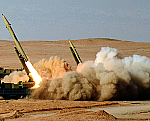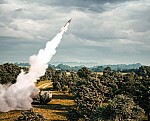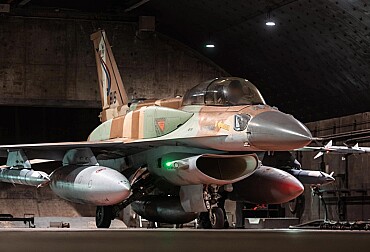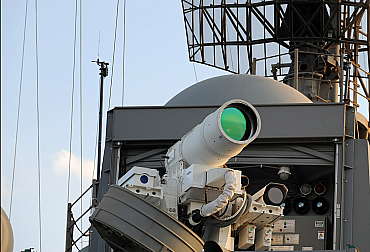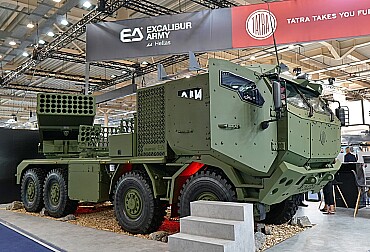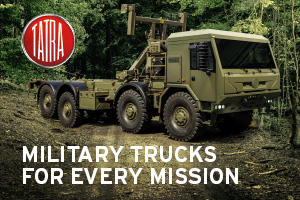Types of frontline units in NATO armies: From battalions to divisions in different member states
There are various approaches to the organization of ground forces in NATO armies, reflecting the historical traditions, geographical characteristics, and military needs of individual countries. On the one hand, there are countries that still use older formations, such as regiments, while others prefer more modern brigade structures. An interesting and key difference is the integration of support units, particularly artillery, into these formations.
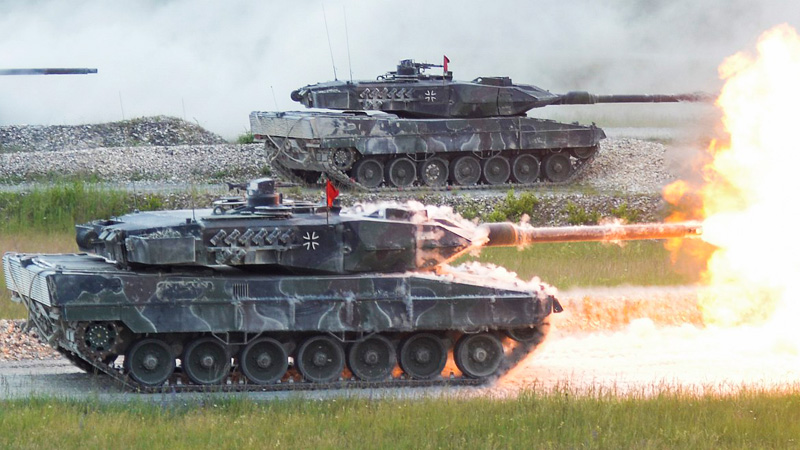
Battalion
The only army within NATO whose "frontline" core is a battalion is currently the army of Montenegro, or rather its ground forces. It is officially an infantry battalion, consisting of three motorized infantry companies, one mountain infantry company, supported by artillery and other rear units.
Regiment
Currently, regiments are considered an outdated concept within NATO member armies, with a preference for brigade structures. However, Albania is an exception. This small, mountainous country relies on two infantry regiments as the main frontline force of its ground forces. In other Western armies, we are used to brigade formations, which are further divided into battalions, and it is precisely these cases that we will now look at.
Brigade
From the perspective of incorporating support units, brigade structures can basically take two forms. In this text, we will focus specifically on the situation of artillery as a decisive indicator. In other words, whether brigades have integrated artillery support or not. There are primarily three member states that have categorically excluded artillery from their "frontline" brigades: the Czech Republic, Slovakia, and Latvia. The situation in the Czech Armed Forces is such that its ground forces have a 7th Mechanized Brigade and a 4th Rapid Deployment Brigade. Artillery is organized "separately" within the 13th Artillery Regiment. The situation is the same in the Slovak army. However, the case of Latvia is different, as its armed forces have virtually no artillery. They consist of one mechanized brigade and four national guard brigades.
The list of countries that emphasize the integration of artillery into "frontline" brigade structures includes North Macedonia, Croatia, Belgium, Estonia, the Netherlands, Norway, Portugal, and Slovenia.
An interesting situation can be found in countries whose ground forces combine both of the previous models. These are Bulgaria, Denmark, Finland, Hungary, and Italy. The Bulgarian ground forces have four mechanized brigades. Two of these (the 2nd and 61st) consist of three "frontline" battalions and one artillery battalion. The other two (the 3rd and 5th) can only boast two mechanized battalions. In addition to these formations, they also have an artillery regiment. The situation is slightly different in the Hungarian armed forces, which primarily consist of three "front" brigades. The first of these (1st Armored) includes two mechanized, one tank, and one artillery battalion. The remaining two brigades have to make do without artillery support, as the Hungarian army does not have any separate artillery units (only the one self-propelled artillery battalion within the 1st Armored Brigade).
Division
Continuing further down the hierarchy of units, we come to divisions. These can be divided into three possible types according to the internal organization of artillery formations, which are one of the most important types of support units. The first type is an arrangement where artillery is part of individual brigades, but at the same time, the division command has its own fire support units. This scheme can be found in the armies of Romania, Lithuania, Canada, and Sweden. It also largely applies to Poland (12th, 16th, 18th Mechanized, and 11th Armored Cavalry Divisions). The exception is the 1st Legion Infantry Division, which consists of one tank brigade, two mechanized brigades, and one motorized brigade without its own artillery. The division's support forces consist of an artillery brigade, an anti-tank regiment, an anti-aircraft regiment, a logistics regiment, and an engineer regiment.
Another type of organization could be called a corps-style division. Such a divisional formation is divided into individual "front" brigades, which have their own support units, including artillery. However, the divisional headquarters does not have its own support units (or only to a very limited extent), which is why the division is more like a corps encompassing several otherwise independent units. This structure can be found in the armies of Spain and France.
In the case of Germany, we find a somewhat combined structure of divisions. While the 10th Tank Division corresponds to the Romanian model in terms of its organisation, the second German division (1st Tank Division) deviates from this model in that two of its brigades lack their own artillery (9th Tank Brigade and 41st Panzer Grenadier Brigade). Great Britain is the second country with an asymmetrical approach to the organization of ground forces. The 1st Division consists of four "front" brigades, which, with one exception (the 19th Brigade), have their own artillery units (not present at the divisional level). In the case of the second (3rd) British division, the situation is completely different. Its two "front" brigades lack artillery, which is, however, present in the form of a complete brigade subordinate to the 3rd Division.
USA
The ground forces of the United States Army consist of brigades within divisions, which are further subordinate to corps or field armies. The ground "frontline" brigades themselves can be divided into three types: infantry (motorized infantry), Stryker (mechanized infantry), and armored (MBT and tracked BVP/OT). American divisions also include an attack aviation brigade. An important feature of the divisional structure is that support units are also represented "separately" in the form of brigades. These are artillery and support brigades. However, the representation of support units (primarily artillery) in the composition of individual brigades is variable and cannot be clearly defined. In simple terms, artillery may or may not be present in all three types of "frontline" brigades.
Turkey
The land component of the Turkish Armed Forces consists of four armies: the 1st, 2nd, 3rd, and Anatolian. The first three armies are further divided into corps: the 1st Army (2nd, 3rd, 5th), 2nd Army (4th, 6th, and 7th), and 3rd Army (8th and 9th). In the case of the 1st Army, it is important to note that the 15th Infantry Division falls under its direct command (and is therefore not subordinate to any corps). It is interesting to note that "frontline" brigades in the Turkish army can be found both independently and as part of divisions (1 armored, 2 infantry, 2 mechanized infantry). Brigades are divided into the following types: armored (9), independent motorized rifle (16), independent motorized rifle (2), artillery (2), and mountain infantry (21). Support (including artillery) units are usually brigade structures in the form of an artillery battalion. In most cases, an artillery regiment is part of a corps. The presence of support units at the division level is less common. This shows that the Turkish ground forces emphasize an "independent" brigade structure.
Greece
A very interesting (asymmetrical) case of armed forces structure within NATO is clearly the Greek army, whose form is shaped by several factors. The first of these is the fulfillment of defense commitments to NATO, followed by the highly diverse environment of potential combat operations. From mountainous areas to clusters of small and larger islands. Last but not least, there is the ability to defend itself against its traditional "alliance enemy," Turkey. The largest formations are: the 1st Army and four de facto corps (the 3rd and 4th Army Corps, ASDEN - the Supreme Military Command of the Interior and Islands, and ASDYS - the Supreme Military Support Command). The 1st Army is divided into two divisions (1st Infantry and 2nd Mechanized Infantry), which are further composed of brigades. The 2nd Division has a compact structure of one armored and two mechanized brigades (all three brigades have support units including artillery) and a divisional artillery headquarters (at the regiment level) with one heavy artillery battalion and an air defense battery. In contrast, the 1st Infantry Division resembles a corps composed of various brigades: a special operations headquarters (brigade structure), the 32nd Marine Brigade, the 71st Airborne Brigade, the 1st Airborne Brigade, and the 1st Army Aviation Brigade (combat helicopter aviation). The structure of the 3rd Army Corps is quite specific. The corps consists of three brigades (3rd Signal, 8th and 9th Mechanized) and three regiments (1st, 10th and 15th Mechanized). However, the 1st and 15th regiments are subordinate to the 9th brigade, which also has the corps' only artillery unit, the 106th self-propelled artillery battalion. The Fourth Army Corps has three divisions, which are divided into seven brigades, with two additional brigades outside the divisional structure and subordinate to the corps headquarters. Artillery units are found at the brigade, divisional, and corps levels of command. The ASDEN corps is not directly composed of brigades (with the exception of the 5th Airborne Brigade) and six brigade-level headquarters, five of which are subordinate to the National Guard. All these headquarters can be considered as above-standard equipped brigade structures with tank, infantry, mechanized, artillery, and other support battalions. The last corps unit (ASDYS) has virtually no frontline units.
The structure of ground forces within NATO reflects a diverse range of approaches that vary not only in terms of historical and geographical factors, but also in terms of operational requirements. Some armies, such as Montenegro's, still prefer small, flexible battalions, while others, such as the United States, have highly developed brigade structures with variable support unit representation. In all cases, the key factor remains the ability to adapt quickly to dynamic combat conditions and provide effective fire support, which is essential for success on the modern battlefield. NATO's military structures are therefore constantly evolving, with each country choosing the model best suited to its specific operational needs.



